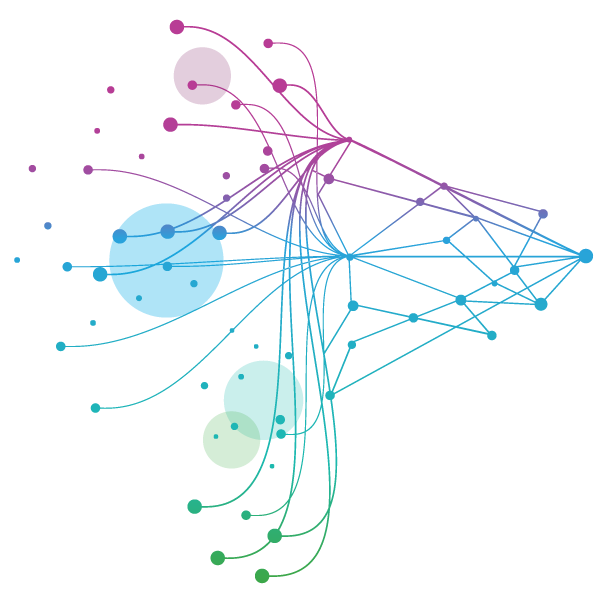Measure the performance of your sales force and marketing channels, adapt your commercial strategy and gain real world competitive insights.






















- Blogs
- Best use cases for scaling agentic AI in commercial life sciences
Generative AI (GenAI) has captured the world’s attention. Organizations are testing and deploying large language models (LLMs) and generative tools for everything from document summarization to chatbots. But scaling proposed AI use cases into enterprise-wide solutions has proven to be a significant challenge. According to industry estimates, more than 70% of GenAI experiments fail to scale and deliver meaningful business outcomes.¹
How can your AI projects avoid this fate and succeed? In life sciences, the answer starts with identifying the most valid use cases that can leverage the game-changing potential of agentic AI. Agentic systems are capable of independently generating content, making decisions, taking actions, and contextualizing learning.
In this blog post, we will explore how organizations use GenAI and agentic AI to bring efficiencies to commercial operations, pharmacovigilance (PV) and beyond—and share our recommendations for finding the most promising use cases.
What is agentic AI—and why now?
While GenAI models focus on creating human-like output (text, images, code), agentic AI goes further. Agents don’t just generate; they act. They execute tasks, apply reasoning, and work autonomously (or semi-autonomously) toward a defined goal. To function, these agents must be built with domain specificity, grounded in trusted data, and orchestrated within human workflows.
In life sciences, this shift could not be more timely. Organizations are awash in unstructured data, from regulatory reports and market research to medical literature and call notes. Traditional analytics can’t keep up, and even the most powerful generative model is only as useful as the actions it can support.
Agentic AI bridges the gap. These systems can navigate complex workflows, make context-aware decisions, integrate with live data sources, and even collaborate with humans as assistants. But before building an AI agent, the first step is choosing the right problems for it to solve.
What GenAI and agentic AI can accomplish in life sciences
While initial excitement placed GenAI at the center of nearly every business conversation, life sciences organizations quickly learned that not every task is suited for LLMs or autonomous agents. The biggest successes thus far tend to cluster around use cases where:
- the process involves large volumes of structured or semi-structured information.
- the cost of manual work is high.
- speed and consistency matter as much as creativity.
- existing regulatory and quality frameworks can be adapted to support AI-driven outputs.
In life sciences, we have already seen GenAI and agentic AI reshape certain areas, with particular effectiveness in pharmacovigilance and safety operations. We’ve also seen AI used in commercial field enablement, qualitative market research analysis, syndicated data exploration and reporting, and in post-call CRM analysis for messaging refinement.
Each success story shares a common denominator: careful alignment between the right AI capabilities and a real business problem.
Where do GenAI and agentic AI scale best?
Scaling GenAI and agentic AI isn’t about applying AI everywhere—it’s about using AI wisely. In life sciences, scaling tends to happen faster when:
- The task is repetitive but complex. AI thrives when there’s enough structure to learn from but enough nuance that traditional automation struggles.
- The output can be checked and corrected. Especially in regulated industries, it’s critical that AI-generated outputs can be easily audited and reviewed.
- The users benefit immediately. Adoption skyrockets if an AI tool saves a field rep 30 minutes before every call.
When these conditions are in place, GenAI and AI agents are more than just “nice to have”—they become essential.
How to spot good use cases for GenAI and agentic AI
Before investing in a GenAI solution, teams should pressure-test potential use cases by asking themselves three critical questions:
- Is it valuable?
Does this use case solve a real pain point that’s felt today, not just a theoretical need? Does it prioritize areas where existing workflows are bottlenecked or data overload slows outcomes? - Is it better than older methods?
Not every task benefits from GenAI. For example, simple numerical analysis often remains better handled by traditional programming. Good use cases should show that GenAI or agentic AI offers either faster outcomes, higher-quality insights, or a fundamentally new capability that wasn’t possible before. - Is it easy to adopt?
Even the most powerful AI tools will fail if they don’t fit naturally into existing workflows. Evaluate how easily end users—whether safety scientists, MSLs, or marketing teams—can engage with the AI and trust its outputs.
When a use case checks all three boxes, it’s far more apt to scale successfully—and deliver real-world ROI.
Early scaled wins for GenAI and agentic AI in life sciences
Following are just two examples for how this heuristic works.
AI-powered pre-call briefing assistants
For reps and medical science liaisons (MSLs), preparation before a call has always been critical—but the task has become increasingly demanding and time-consuming.
Agentic AI now powers pre-call briefing assistants that automatically gather relevant clinical trial data, physician interaction histories, and product information. The assistant synthesizes everything into a concise, personalized brief, helping field teams walk into conversations fully equipped. It’s about more than efficiency—it’s about driving more meaningful, informed engagements with healthcare providers.
|
Is it valuable? |
Call prep drives call quality; large sales force uses several times per day |
|
Is it better than older methods? |
Leverages available customer and product data |
|
Is it easy to adopt? |
CRM view or mobile app |
Unlocking the value of recalled marketing messages
In life sciences, field sales and marketing teams deliver an untold volume of nuanced, personalized marketing messages across all brands and multiple channels—but which ones truly resonate?
AI agents can analyze CRM records, email threads, call notes and market research results to uncover which messages are best recalled by providers. Armed with this insight, commercial teams can refine their content strategies, tailor rep training, and ensure that future messaging lands with greater impact. It’s a new frontier for commercial optimization—driven by real-world feedback, not guesswork.
|
Is it valuable? |
Marketing and brand teams need to know their messages are getting through and converting |
|
Is it better than older methods? |
Conventional analysis is so time-consuming that insights gained are already outdated |
|
Is it easy to adopt? |
Available with IQVIA AI Assistant, integrated into the Orchestrated Analytics platform |
IQVIA can help you scale AI with confidence
As organizations sharpen their understanding of where GenAI and agentic AI provide true value, the success rate for scaling these technologies will rise. Instead of chasing flashy gimmicks, more teams are prioritizing durable, business-aligned use cases. And that’s where IQVIA’s deep domain expertise, proprietary data assets, and AI leadership converge. We are helping lead the way by designing and deploying agentic AI solutions that are already driving measurable impact.
We believe the future isn’t about replacing human expertise. It’s about augmenting it. In the hands of empowered PV specialists, field reps, MSLs, and market analysts, AI becomes a trusted assistant—unlocking faster insights, smarter decisions, and better patient outcomes.
If you’re ready to move beyond pilots and start seeing real value from AI, get in touch to request a demo and learn how IQVIA can help you scale with confidence.
References
1. Deloitte. “State of Generative AI in the Enterprise.” 2025, www2.deloitte.com/us/en/pages/consulting/articles/state-of-generative-ai-in-enterprise.html.
Related solutions
IQVIA Orchestrated Analytics connects actionable, intelligent insights across commercial teams to empower improved strategic decision making.





